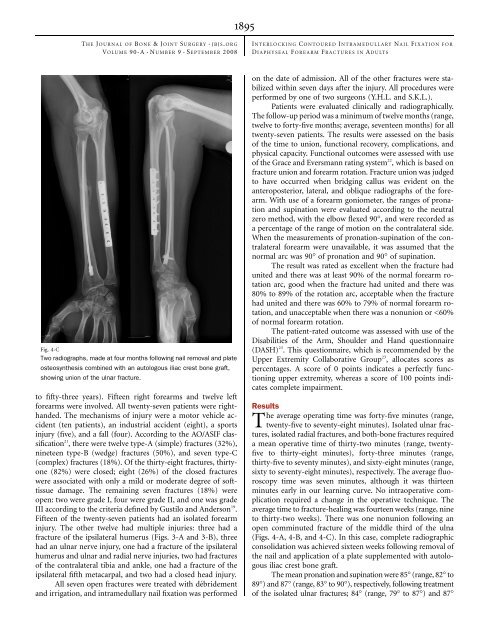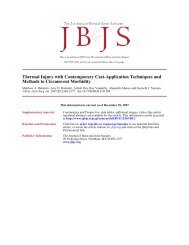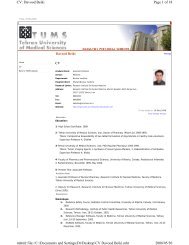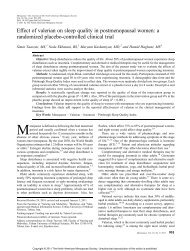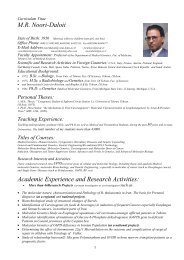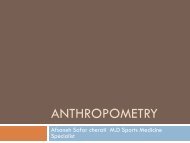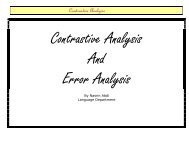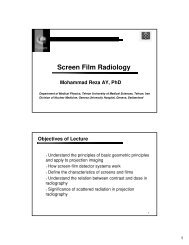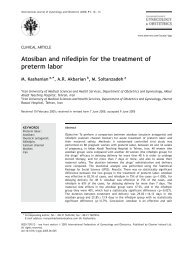Interlocking Contoured Intramedullary Nail Fixation for Selected ...
Interlocking Contoured Intramedullary Nail Fixation for Selected ...
Interlocking Contoured Intramedullary Nail Fixation for Selected ...
Create successful ePaper yourself
Turn your PDF publications into a flip-book with our unique Google optimized e-Paper software.
d THE J OURNAL OF B ONE &JOINT S URGERY JBJS. ORG<br />
d d VOLUME 90-A N UMBER 9 S EPTEMBER 2008<br />
Fig. 4-C<br />
Two radiographs, made at four months following nail removal and plate<br />
osteosynthesis combined with an autologous iliac crest bone graft,<br />
showing union of the ulnar fracture.<br />
to fifty-three years). Fifteen right <strong>for</strong>earms and twelve left<br />
<strong>for</strong>earms were involved. All twenty-seven patients were righthanded.<br />
The mechanisms of injury were a motor vehicle accident<br />
(ten patients), an industrial accident (eight), a sports<br />
injury (five), and a fall (four). According to the AO/ASIF classification<br />
21 , there were twelve type-A (simple) fractures (32%),<br />
nineteen type-B (wedge) fractures (50%), and seven type-C<br />
(complex) fractures (18%). Of the thirty-eight fractures, thirtyone<br />
(82%) were closed; eight (26%) of the closed fractures<br />
were associated with only a mild or moderate degree of softtissue<br />
damage. The remaining seven fractures (18%) were<br />
open: two were grade I, four were grade II, and one was grade<br />
III according to the criteria defined by Gustilo and Anderson 19 .<br />
Fifteen of the twenty-seven patients had an isolated <strong>for</strong>earm<br />
injury. The other twelve had multiple injuries: three had a<br />
fracture of the ipsilateral humerus (Figs. 3-A and 3-B), three<br />
had an ulnar nerve injury, one had a fracture of the ipsilateral<br />
humerus and ulnar and radial nerve injuries, two had fractures<br />
of the contralateral tibia and ankle, one had a fracture of the<br />
ipsilateral fifth metacarpal, and two had a closed head injury.<br />
All seven open fractures were treated with débridement<br />
and irrigation, and intramedullary nail fixation was per<strong>for</strong>med<br />
1895<br />
INTERLOCKING C ONTOURED I NTRAMEDULLARY NAIL F IXATION FOR<br />
DIAPHYSEAL F OREARM FRACTURES IN A DULTS<br />
on the date of admission. All of the other fractures were stabilized<br />
within seven days after the injury. All procedures were<br />
per<strong>for</strong>med by one of two surgeons (Y.H.L. and S.K.L.).<br />
Patients were evaluated clinically and radiographically.<br />
The follow-up period was a minimum of twelve months (range,<br />
twelve to <strong>for</strong>ty-five months; average, seventeen months) <strong>for</strong> all<br />
twenty-seven patients. The results were assessed on the basis<br />
of the time to union, functional recovery, complications, and<br />
physical capacity. Functional outcomes were assessed with use<br />
of the Grace and Eversmann rating system 22 , which is based on<br />
fracture union and <strong>for</strong>earm rotation. Fracture union was judged<br />
to have occurred when bridging callus was evident on the<br />
anteroposterior, lateral, and oblique radiographs of the <strong>for</strong>earm.<br />
With use of a <strong>for</strong>earm goniometer, the ranges of pronation<br />
and supination were evaluated according to the neutral<br />
zero method, with the elbow flexed 90°, and were recorded as<br />
a percentage of the range of motion on the contralateral side.<br />
When the measurements of pronation-supination of the contralateral<br />
<strong>for</strong>earm were unavailable, it was assumed that the<br />
normal arc was 90° of pronation and 90° of supination.<br />
The result was rated as excellent when the fracture had<br />
united and there was at least 90% of the normal <strong>for</strong>earm rotation<br />
arc, good when the fracture had united and there was<br />
80% to 89% of the rotation arc, acceptable when the fracture<br />
had united and there was 60% to 79% of normal <strong>for</strong>earm rotation,<br />
and unacceptable when there was a nonunion or


